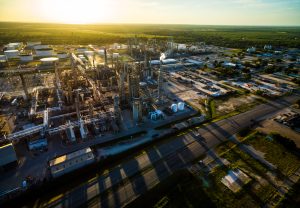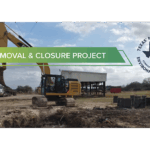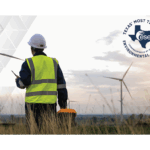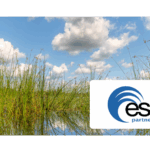
Phase 2 Environmental Site Assessments (ESAs) play a crucial role in identifying and addressing potential environmental risks and contaminants in a property. They are often conducted during real estate transactions or as part of regulatory compliance. In the case of Longview Phase 2 ESA, it involves a comprehensive examination of the property to ensure its environmental safety. This article will provide a detailed overview of Longview Phase 2 ESA, including its importance, key components, the process involved, how to interpret the results, and strategies for mitigation and regulatory compliance.
Understanding Phase 2 Environmental Site Assessments
Phase 2 ESA is a critical step that follows the initial Phase 1 ESA. While Phase 1 focuses on identifying potential environmental risks and history of the property, Phase 2 goes a step further by evaluating the presence and extent of contaminants. By conducting Phase 2 ESA, property owners and prospective buyers ensure that they have a comprehensive understanding of any environmental liabilities associated with the property.
The Importance of Phase 2 Assessments
Phase 2 ESA is essential due to several reasons. Firstly, it helps protect human health and the environment by identifying and quantifying the presence of hazardous substances in the soil, groundwater, and other media. This information allows for proper remediation and risk management strategies to be implemented if necessary. Additionally, Phase 2 ESA ensures compliance with local, state, and federal regulations, preventing potential legal and financial liabilities.
Key Components of Phase 2 Assessments
A comprehensive Phase 2 ESA includes several key components:
- Site Investigation: This involves an initial site inspection to assess potential sources of contamination and determine areas for sampling.
- Sampling and Analysis: Samples of soil, groundwater, and other media are collected and analyzed in accredited laboratories to determine the presence and concentration of contaminants.
- Risk Assessment: The collected data is then assessed to evaluate the potential risks posed by the contaminants to human health and the environment.
Site Investigation is a crucial step in the Phase 2 ESA process. Trained professionals conduct a thorough inspection of the property, looking for any signs of potential contamination. This includes examining the surrounding area, checking for any nearby industrial sites, underground storage tanks, or other potential sources of pollutants. By identifying these potential sources, the site investigation helps determine the areas that need to be sampled for further analysis.
Once the site investigation is complete, the next step is Sampling and Analysis. This involves collecting samples of soil, groundwater, and other media from the identified areas. The samples are carefully collected following strict protocols to ensure accurate and representative results. These samples are then sent to accredited laboratories where they undergo rigorous analysis. The analysis provides valuable information about the presence and concentration of contaminants, allowing for a better understanding of the potential risks associated with the property.
The Process of Longview Phase 2 Assessments
The Longview Phase 2 Environmental Site Assessment (ESA) process follows a systematic approach to ensure accurate and reliable results. This comprehensive process involves several key steps that are crucial in identifying and evaluating potential environmental hazards.
Initial Site Inspection
During the initial site inspection, highly skilled environmental consultants or professionals visit the property to meticulously identify potential sources of contamination. They leave no stone unturned as they assess the current and historical use of the property, nearby industries, and any recorded incidents that might have contributed to environmental hazards. This step provides critical information for the subsequent sampling and analysis process.
Imagine these experts walking around the property, equipped with their knowledge and cutting-edge tools, carefully examining every nook and cranny. They pay close attention to every detail, looking for any signs or clues that could lead to the discovery of potential contaminants. Their expertise allows them to identify even the most subtle indicators of environmental risks.
Sampling and Analysis
Based on the findings of the initial site inspection, environmental consultants embark on the next crucial step: sampling and analysis. They collect samples of soil, groundwater, and other media in accordance with standard protocols. These samples are then sent to accredited laboratories that specialize in environmental analysis.
At the laboratory, the samples undergo rigorous testing and analysis. Highly trained scientists and technicians utilize state-of-the-art equipment and techniques to determine the presence and concentration of contaminants. This meticulous process ensures precise and reliable results, providing a solid foundation for a thorough evaluation of potential risks.
Risk Assessment
Upon receiving the analysis results, experienced environmental professionals conduct a comprehensive risk assessment. This evaluation aims to determine the potential risks posed by the identified contaminants. It takes into account various factors, including exposure pathways, toxicity levels, and regulatory guidelines.
These experts carefully analyze the data, considering the potential impact on human health and the environment. They assess the risks from all angles, using their expertise to evaluate the severity and extent of the hazards. This thorough risk assessment enables property owners and stakeholders to make informed decisions regarding property use, potential remediation, and risk management strategies.
By following this systematic approach, the Longview Phase 2 ESA process ensures that accurate and reliable information is obtained. This information is crucial for making informed decisions about property use and managing potential environmental risks. The dedication and expertise of the environmental professionals involved in this process play a vital role in safeguarding the environment and the well-being of communities.
Interpreting the Results of Longview Phase 2 Assessments
Understanding the results of a Longview Phase 2 ESA is crucial for property owners, potential buyers, and other stakeholders.
Understanding Contamination Levels
The analysis results provide information about the concentration of contaminants present in the soil, groundwater, and other media. These results are compared against regulatory guidelines and standards to determine the severity of contamination. High contamination levels may require immediate remediation, while lower levels might require ongoing monitoring or risk management strategies.
Potential Impacts on Property Value
Contamination can significantly affect the value of a property, impacting its marketability and potential uses. Understanding the potential impacts of contamination on property value allows property owners and potential buyers to make informed decisions about investment or remediation costs.
Mitigation and Remediation Strategies
If contamination is identified during the Longview Phase 2 ESA, appropriate mitigation and remediation strategies can be implemented.
Remediation Techniques for Soil Contamination
Remediation techniques for soil contamination vary depending on the type and extent of contamination. Common strategies include excavation and removal, chemical treatments, and natural attenuation. Environmental professionals recommend the most effective approach based on site-specific conditions, regulatory requirements, and cost-effectiveness.
Strategies for Groundwater Contamination
When groundwater contamination is identified, various techniques can be employed for remediation. These include pump and treat systems, in-situ bioremediation, and permeable reactive barriers. The selection of the most suitable strategy depends on factors such as hydrogeology, contaminant type, and regulatory standards.
Regulatory Compliance and Phase 2 Assessments
Compliance with local, state, and federal environmental regulations is essential during the Longview Phase 2 ESA process.
Meeting Federal and State Environmental Standards
Environmental professionals conducting Longview Phase 2 ESA ensure that the assessment adheres to relevant federal and state environmental standards. Compliance with these standards helps protect human health, the environment, and ensures legal and regulatory obligations are met.
Ensuring Compliance with Local Regulations
In addition to federal and state standards, compliance with local regulations is also crucial. Different regions may have specific requirements or restrictions regarding environmental assessments and remediation activities. By ensuring compliance with local regulations, property owners and stakeholders avoid potential penalties and legal disputes.
By conducting a comprehensive Phase 2 ESA like Longview Phase 2 ESA, property owners and potential buyers can identify and address potential environmental risks and contaminants. This knowledge allows for informed decisions regarding property use, remediation strategies, and compliance with environmental regulations. Understanding the importance, key components, and interpretation of Longview Phase 2 ESA results, as well as mitigation strategies and regulatory compliance, is essential for maintaining environmental safety and minimizing potential liabilities.
If you’re ready to take the next step in ensuring the environmental integrity and compliance of your property, ESE Partners is here to guide you through the complexities of Phase 2 Environmental Site Assessments. Our team of experienced environmental engineers and scientists specialize in delivering comprehensive assessment, remediation, and compliance services tailored to your unique needs. With our commitment to improving community quality of life and our innovative approaches to environmental challenges, we are your trusted partner in responsibly moving your business forward. Don’t wait to address potential environmental risks – Request A Proposal today and let ESE Partners provide you with honest, quality-driven results.








